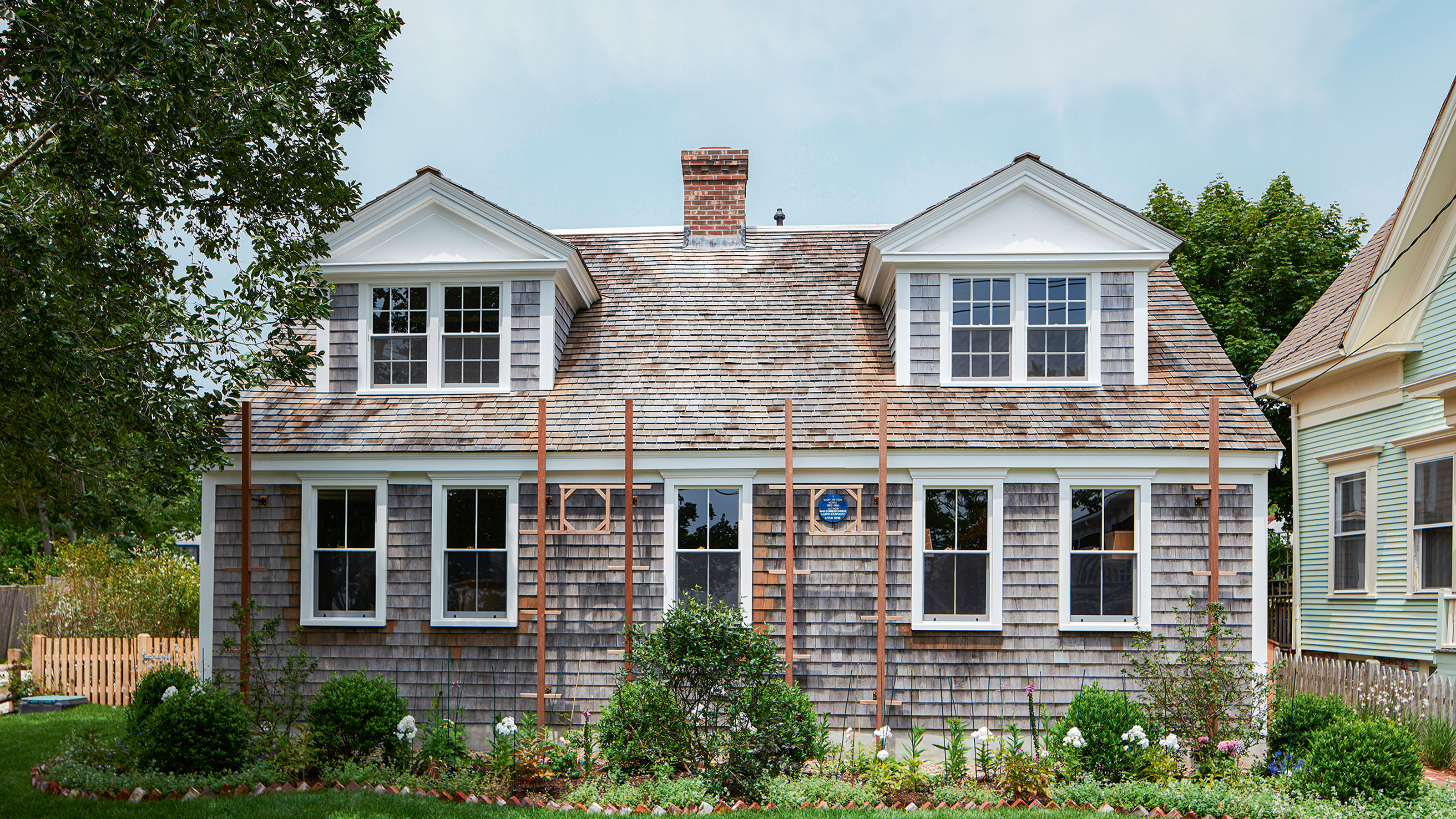This iconic 18th-century house evokes a casual elegance with its cozy interior
Mary Heaton Vorse's 18th-century house in Provincetown has been given a new lease of life by interior designer extraordinaire Ken Fulk


Stories of creativity and derring-do are woven into the fabric of this house, now one of the world's best homes, but it’s again ready to host a new generation of artistic adventurers, thanks to interior designer Ken Fulk.
He and his husband Kurt Wootton had gazed at this ramshackle building from their home across the street for many years and were familiar with its extraordinary history.
It was first known as the Captain Kibbe Cook House, after the 19th-century whaler and traveller who lived here, but in 1906, it entered a new era when it was bought by the civil rights activist, writer and all-round radical Mary Heaton Vorse.
‘When war broke out, this house became a refuge for New York’s creatives and visitors included Eugene O’Neil and Sinclair Lewis,’ says Ken. But in recent years, it had fallen into disrepair and when Mary’s granddaughters approached Ken about rescuing it, he didn’t hesitate.
‘The danger was that someone else would demolish it or turn it into a series of condos and its crooked rooms, low ceilings and paint splattered floorboards would be erased forever. I wanted to hold on to its history.’
Living room

Ken began an ambitious overhaul that would leave the house ‘looking as if it hadn’t been touched at all’. The layout today would be familiar to Mary, ‘with rooms that meander into each other’, but this casual, tumbledown elegance was hard won. It entailed painstakingly stripping everything out, shoring up the foundations and then rebuilding it, brick by brick.
Displaying contemporary art within the historic setting is one of Ken's living room ideas that ‘has brought the house to life'. He upholds the original spirit of the house by continuing to welcome artists, writers and creatives through its doors, with artists’ residences, events and art exhibitions.
Design expertise in your inbox – from inspiring decorating ideas and beautiful celebrity homes to practical gardening advice and shopping round-ups.
When it came to furniture, Ken is an expert at combing antiques fairs and auction houses: ‘Luckily brown furniture isn’t in vogue so it’s inexpensive,’ he says. In the best Provincetown tradition, extra pieces came together fortuitously. ‘A neighbor gave us a wonderful sofa. When our dog chewed the corners of an expensive rug, I used it to cover a wingback chair. A sofa from an auction house was re-covered in vintage quilts I had in my San Francisco studio.’

Furniture is a mish-mash of ‘happy accidents’, put together in the spirit of the house. ‘It feels like a collection that has evolved over time,’ says Ken.
Kitchen

This space was recreated from scratch to replace a less special 1970s kitchen. Kitchen ideas include using salvaged timbers to bring a more authentic feel, complemented by opaline pendant lights and copper pans.
Dining room

One of Ken's dining room ideas was to source a round table as the civil rights activist Mary Heaton Vorse, a previous inhabitant of the house, wrote about her own gatherings around one with luminaries debating politics. Ken acquired this huge round table that was a perfect replacement when he redesigned Boston’s Algonquin Club. ‘I love happy accidents like that,’ he says.
Chinaware and glassware are an authentic mish-mash of grand and second-hand: ‘Irish crystal lives beautifully next to thrift shop jelly glasses,’ he adds.
Bar room

This sociable, snug space has hosted innumerable writers, artists and bohemians over the years.
Staircase

The timber treads on the back staircase show the passage of time in their patina and wear. ‘Deep dips reveal all the people who came and went over the decades,’ says Ken.
Bedroom

Some walls had to be replastered, but this was done by hand by local artisan Nate McKean, who undertook all the restoration. ‘Putting it back together wouldn’t have been possible without him,’ adds Ken. Bedroom ideas include incorporating a slight sheen on the walls to accentuate the natural light.
‘All floorboards were numbered and relaid, except with modern plumbing and cabling in place,’ adds Ken. Visitors often ask Ken where he found the beautiful paint colors – the rich barn red on the window frames, the near-luminous blue on the floorboards. ‘But I didn’t repaint anything, I just reassembled it,’ he says.
Bedroom

Low or pitched ceilings are typical features of Provincetown architecture, while an all-American blanket is a finishing touch.
Bedroom

‘The way the light moves through the house has a very ethereal quality,’ says Ken. ‘There’s a unique atmosphere here.’
Interior designer/ Ken Fulk
Photography/ Stephen Kent Johnson
Text/ Jo Leevers

Interiors have always been Vivienne's passion – from bold and bright to Scandi white. After studying at Leeds University, she worked at the Financial Times, before moving to Radio Times. She did an interior design course and then worked for Homes & Gardens, Country Living and House Beautiful. Vivienne’s always enjoyed reader homes and loves to spot a house she knows is perfect for a magazine (she has even knocked on the doors of houses with curb appeal!), so she became a houses editor, commissioning reader homes, writing features and styling and art directing photo shoots. She worked on Country Homes & Interiors for 15 years, before returning to Homes & Gardens as houses editor four years ago.